- Getting around Lijiang. Dont stay in the Old Towns more than 2 days, there is nothing to do. KRISS Oct 9, 2013 05:46
- 2013 Beijing Temple Fair BENNYLAU Feb 26, 2013 03:29
- Malaysian traveling from KUL - LAX vis Shanghai PVG ZATI_DY Jan 3, 2013 20:15
More Than A Bridge Over Water
- Views: 4762
- |Vote: 0 0
- |Add to Favorites
- |Recommend to Friends
Out of the Shadows
The sun is rising like a rare ruby over the rooftops as a lone riverboat whispers around the corner of the canal. The water, tonguing the scarlet light of daybreak, swallows the boatman and his barge into a silent silhouette. The bleached bone-colored walls of the buildings blink into shadow before becoming highlighted by the glittering paladin growing in the sky.
There’s another couple standing on the bridge next to us, and down the lane the tender tinkling of wares as they’re set out on water-side tables, ready for breakfast-seekers. Other than that, it’s us, the sunrise, and the piquant beauty of a town that travelers, not tourists, know about.
A Living Fossil
In northeast Zhejiang Province, between the fabled jewels of the Yangtze--Hangzhou and Suzhou--lies a slender footprint of anthropological marvel: the town of Wuzhen. Bisected by China’s most ancient waterways, Wuzhen has been subsisting in the ebb and flow of this country’s turbulent history for more than 1,300 years.
In May 1999 the government pledged to invest 200 million RMB over five years for the maintenance and improvement of Wuzhen, considered one of China’s most delicate cultural fossils. A genuine deposit of life spouting forth from the lacework waterways of the Yangtze delta, Wuzhen is a town that has been preserved—not restored or dolled up for a role in a farcical play. It’s not so much a living museum as a time-capsule town of fish, rice, and silk where the Water Market weekly floats by and sells fruits, vegetables, meats, and goods from their trade boats into the villagers’ windows.
Knowing What to Look For
And though you may be trailed by ticket-checking security guards and can easily find the public toilets, the traditional lifestyle of Wuzhen is not just “put on”—it carries on in its time-worn way, the trace of an organism that stumbles along in its natural pattern in much the same way as the water that has slipped through the canalways for just as long.
Wuzhen’s fame reached our ears by accident, stumbled upon only via the documentations of travelers who had been there and done that. It’s not a place you can find on the internet unless you know what to look for, and I haven’t found report of it in any of the current printed guidebooks on China. However, if you do know what to look for, there is more than enough information on the web to get you geared up and pumped up to get there—which isn’t terribly convenient as its not a stop-over on the major Shanghai, Suzhou, Hangzhou tourist-triangle. Wuzhen even has its own gorgeous and amazingly user-friendly website which can be found at www.wuzhen.com.cn/oldweb/wuzhen.eng.
Not Knowing What to Expect
We got to Wuzhen from Suzhou via JiaXing. That is, from the main bus station in Suzhou we bought tickets to Jia Xing and didn’t listen to anyone when they told us there’s nothing worthwhile in JiaXing. An hour later, in the tiny bus depot, we bought tickets for Wuzhen, and then bumped through the countryside for another hour until we pulled up to the side of the road and were told to get off.
At first glance, Wuzhen doesn’t look like what you expect it to look like. That’s because twenty percent of the original town limits, and what’s grown up outside it, is the same as many of China’s small towns today: dull, lifeless apartment blocks and wide streets, as squared-off and box-like as the designers probably were who erected the buildings. But a five minute walk down each of the ‘modern’ section of the towns’ two thoroughfares and a bridge crossing later and suddenly you’ve dropped into another century. It’s almost depressing to look down and see that your clothes don’t match the delicately orchestrated opus of stone, wood, and tiles that knuckle up along the canals and covered passageways of Wuzhen.
Slow Opening
The 2-kilometer-long layout of the city is divided into 6 districts along an East-West-East circuit. The districts are dissected by waterways and demarcated by function: the Traditional Workshops District, the Traditional Culture District, the Traditional Food and Beverage district, the Traditional Shops and Stores District, the Traditional Local-Styled Dwelling Houses District, and the Water Township Customs and Life District. The majority of the buildings that have been preserved were constructed in the Ming and Qing dynasty.
Strolling through the narrow streets in the early light of morning, as people were just waking up (and brushing their teeth out of their windows), it felt as if doorways didn’t exist—just boarded up building fronts—which lent an echoing feel of abandonment to a period lost to time and modern living. But one by one slats of walls would be removed and put aside, and people’s doorways and shopfronts were revealed piecemeal, their smiles opening just as slowly but equally broad. It was beautiful.
Traditional Workshops District
And once the shops and doorways had all opened we could easily find which district we were in. The Traditional Workshops District was shop after shop of coppersmiths and woodcarvers, carpenters, shoe-makers, tobacconists, looms set to weaving and, across the street, the cloth-dyeing workshop. The area is famous for its indigo-dyed calico, which is fashioned into batiked goods like shoes, dresses, shirts, coats, trousers, headscarves, wall-hangings, bedspreads—practically anything you might be after. The finished textiles are then sold in the Traditional Shops and Stores District, along with many other goods that the town of Wuzhen has been fashioning for centuries.
Mouthful of Joy
In the Traditional Food and Beverage District you can find Wuzhen’s local dishes and snack foods (小吃) as well as tea houses to beat all tea houses. Late morning, as we strolled through the area taking note of food local to Wuzhen, I spotted some bright-green mounds resting in a bamboo basket beckoning to me through plumes of steam. I approached the little shop and asked what the little green balls were. Up close they were even more stunning, the most pure emerald-green color I’d seen. I couldn’t believe it was edible or that it would be delicious. I was expecting it to be a very local kind of dumpling made from very strange ingredients.
But I was wrong. They were pumpkin steamed glutinous rice dumplings with filling inside. Pumpkin is one of my favorite foods, especially the way the Chinese cook pumpkin, and I was overjoyed and asked for one. “Which filling would you like?” She asked me. I returned with “What fillings do you have?” and she rattled off a short list. But one filling stood out and I forgot the others “黑芝麻” (hei1zhi1ma0): black sesame. A pumpkin dumpling with black sesame filling? I thought I had died and gone to heaven. Two of my most favorite foods rolled into one delectable little steamed ball of deliciousness. I had never been so happy as I was strolling along those streets in the morning light with my pumpkin-black-sesame-dumpling in hand.
Time for Tea
Tea shops are also a specialty of the Traditional Food and Beverage District, and one Tea Shop in particular stands out in its fame. The Fanglu Pavilion Teahouse, south of the Ying Bridge, is said to be the best in Wuzhen. Legend has it that the owner and founder Lu Tong, as he was just beginning his business, ran into a spot of trouble with some poisonous tea leaves. Luckily Lu Yu, the infamous Tea Aficionado and author of the Cha Ching, the Tea Bible, was passing through Wuzhen. Lu Yu saw Lu Tong’s distress and taught him how to pick, make and serve tea so that it had the best flavor. Lu Tong’s Fanglu Pavilion Teahouse has been serving delicious tea in incomparable surroundings since.
Scholarly Endeavors
Another of Wuzhen’s claims to fame is its impressive list of scholars. In the twentieth century the contemporary writer Mao Dun, who wrote The Lin’s Shop, hailed from Wuzhen. In 1984, 20 years after his death, his childhood home was renovated and can be visited today. But what’s of more interest is the Mao Dun Museum, which used to be the famous Li Zhi Academy of Classical Learning. From the Song (960-1279) to the Qing (1644-1911) Dynasties Wuzhen produced more successful candidates in the highest Imperial Examinations than any other town south of the Yangtze. All the candidates attended this prestigious Academy to prepare for sitting the Exam.
Passing Time
As noon neared we sought out a place for a rest and a snack. Following the locals’ example we gathered around the town square. We sat on a bench along a covered promenade, looking over the square with the theatre-playhouse on one end and the Daoist temple on the other. As I peeled a Chinese Grapefruit as big and golden as the sun above us, I couldn’t help but think that the locals across from me, similarly perched along benches on the opposite promenade, looked like a flock of preening and roosting cranes: isolated in small groups, left to their private conversations, heads turning, observing—watching the world go by as the river below them coursed on.
Impressed
It’s no wonder that to know Wuzhen is to know its history and its industry. You can’t just see Wuzhen as a tourist would; you have to experience it and absorb it with a traveler’s mind. And if you’re lucky enough to catch the traditional Flower Drum Operas or Shadow Puppet Shows held in the community theatre you’ll see that the artistry of Wuzhen isn’t for amateurs. The internal aesthetic embedded into this charming town has honed masters of its many simple yet beautiful trades over the centuries, whether it’s breeding silkworms or raising chrysanthemums; constructing buildings or building bridges; maneuvering boats or putting on operas; writing fiction or studying the Classics; weaving fabric or carving wood. A day spent in Wuzhen is likely to be fossilized in your memory for time immemorial.
Information
Wuzhen is located in Northeastern Zhejiang Province, 17 kilometers north of TongXiang
Getting There by bus:
Suzhou to JiaXing 26RMB
JiaXing to Wuzhen 8RMB
There are several buses from the Wuzhen bus station to both Suzhou, Hangzhou, and other towns in the area.
In town it's best to walk, but they have convenient and cheap pedicabs as well
There are several hotels in the area, and you should negotiate a price. Ask a pedicab driver to take you to a cheap one and a few options should materialize
Tickets for the Ancient Town districts of Wuzhen are 100RMB--but worth it. Similar to Pingyao, the all-inclusive ticket will get you into every little mini museum and 'area' that would otherwise be restricted if you were just strolling the streets.
Some hoteliers will offer a room price with ticket price included, but this is not recommended as they won't actually give you a ticket and you won't be able to visit any of the places of interest. Negotiate the room separately and buy the ticket on your own.
Check out the awesome website: www.wuzhen.com.cn/oldweb/wuzhen.eng/



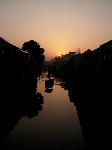
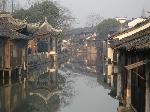

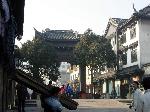
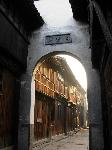
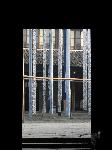
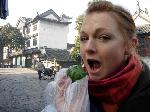
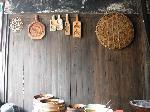
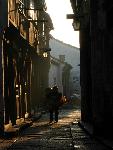
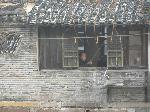
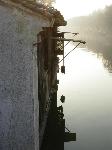
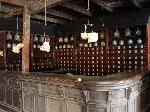
 Copyright © 1998-2026 All rights reserved.
Copyright © 1998-2026 All rights reserved.
1.
Apr 19, 2007 22:24 Reply
CHYNAGYRL said:
very nice article. sounds like a very charming place to visit!! i'll keep this town in mind next time I visit China.